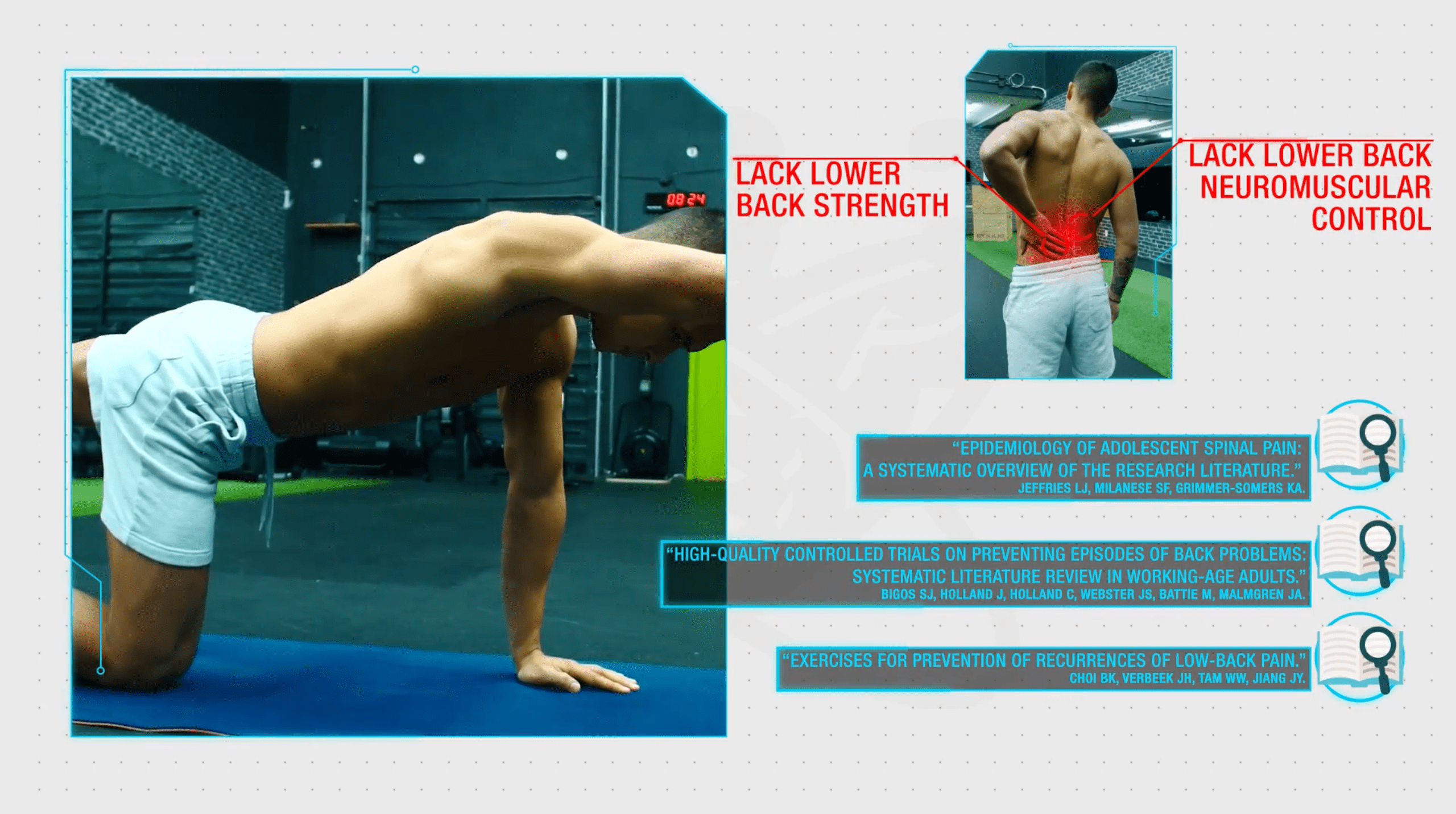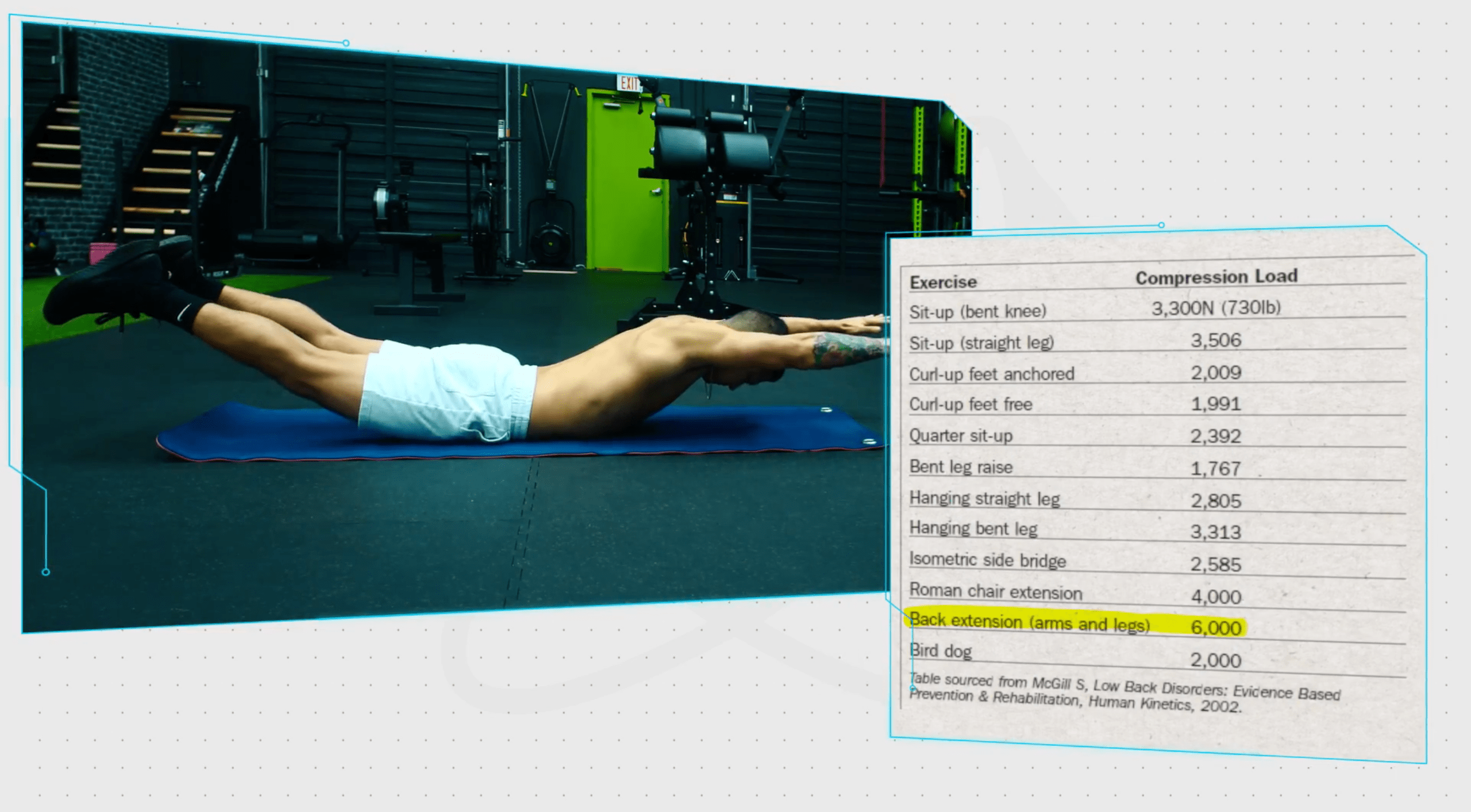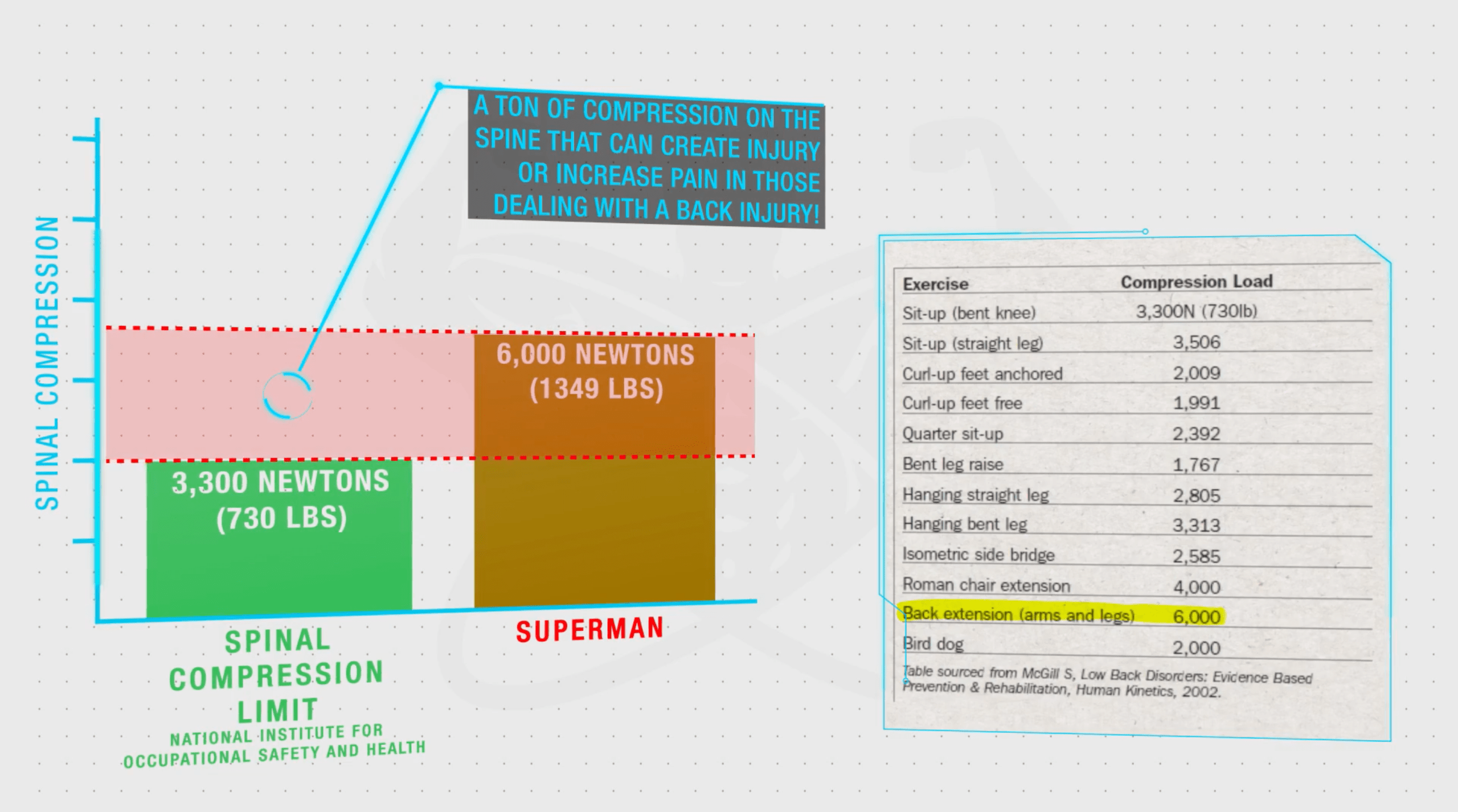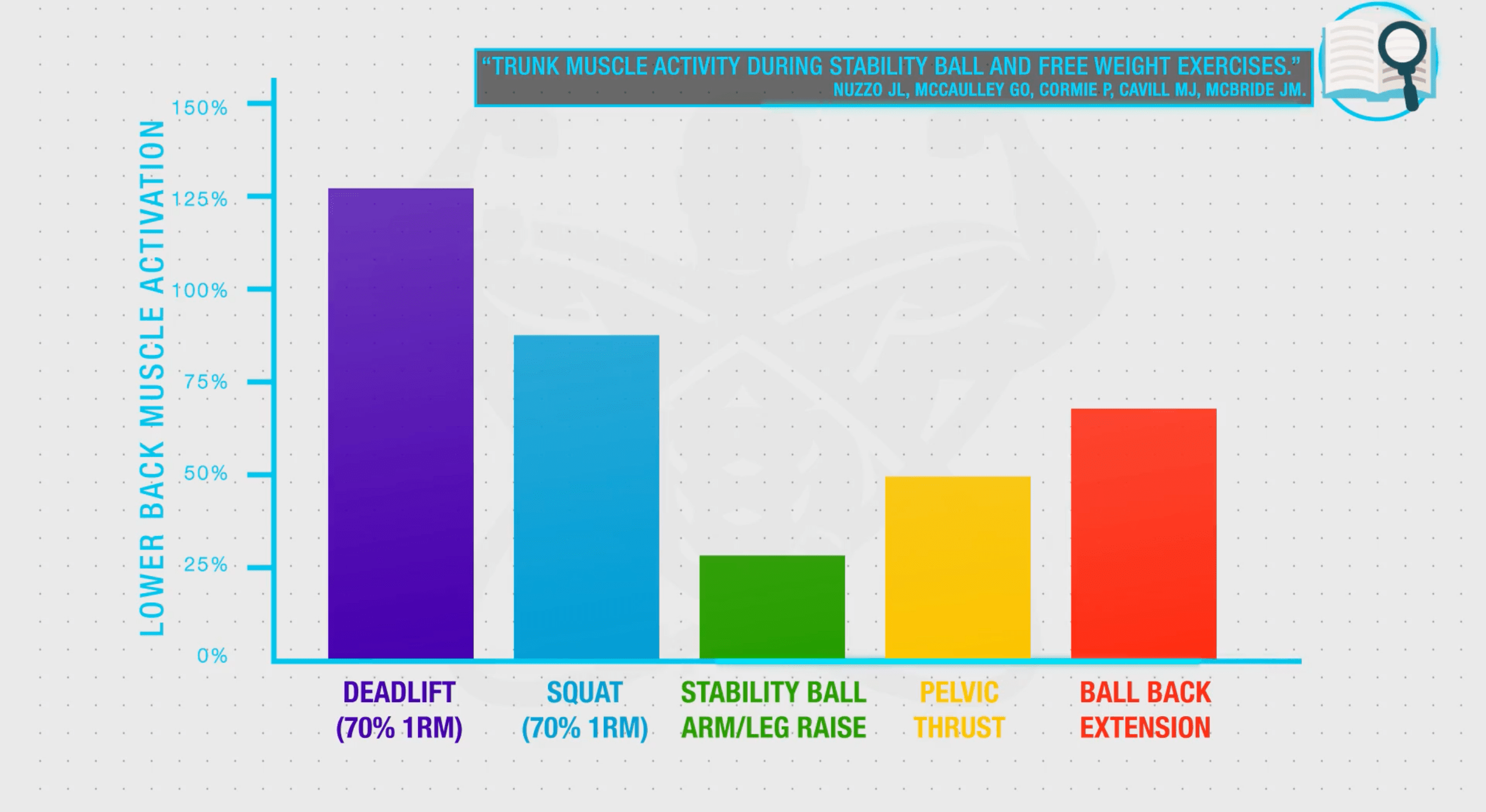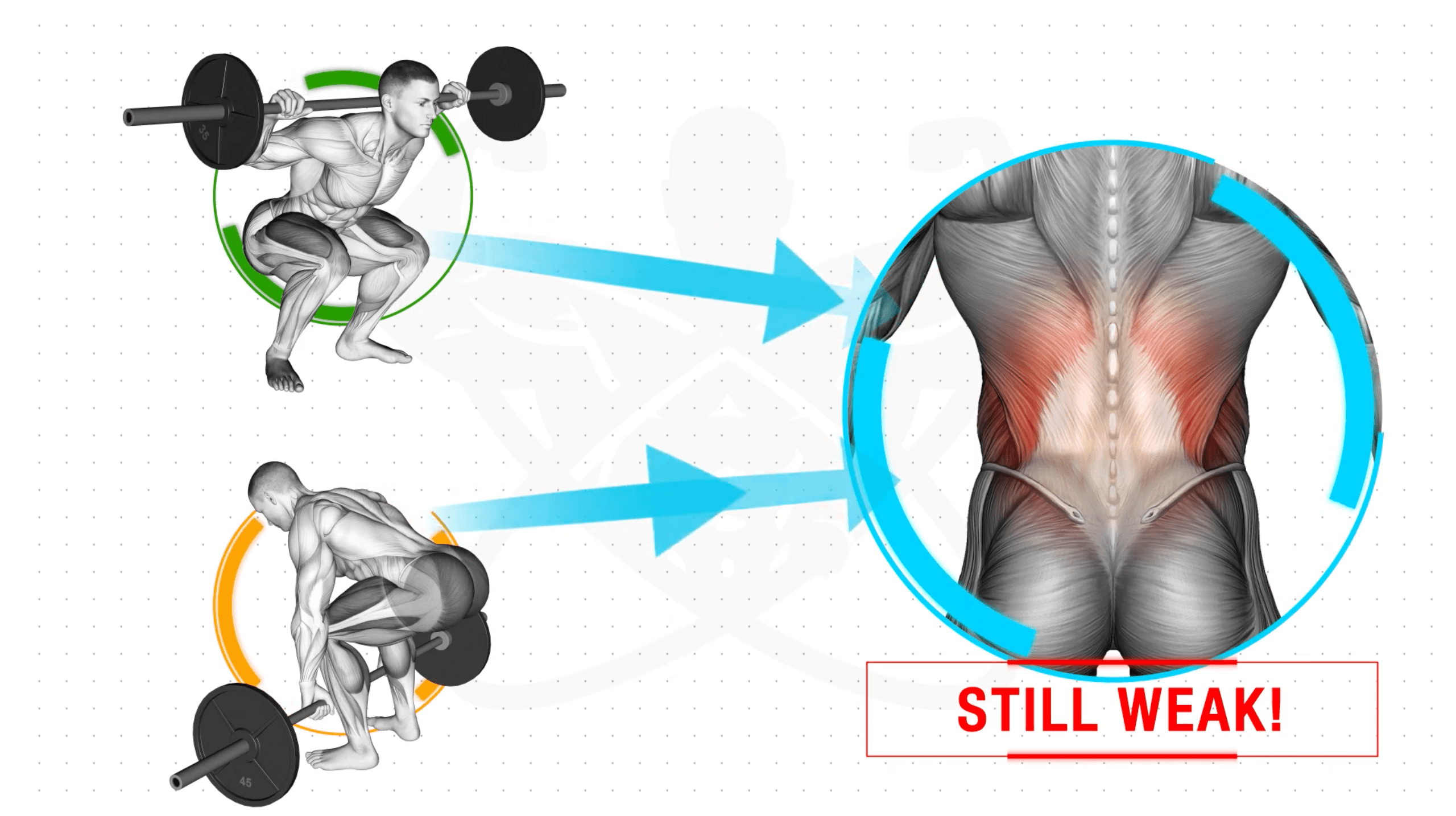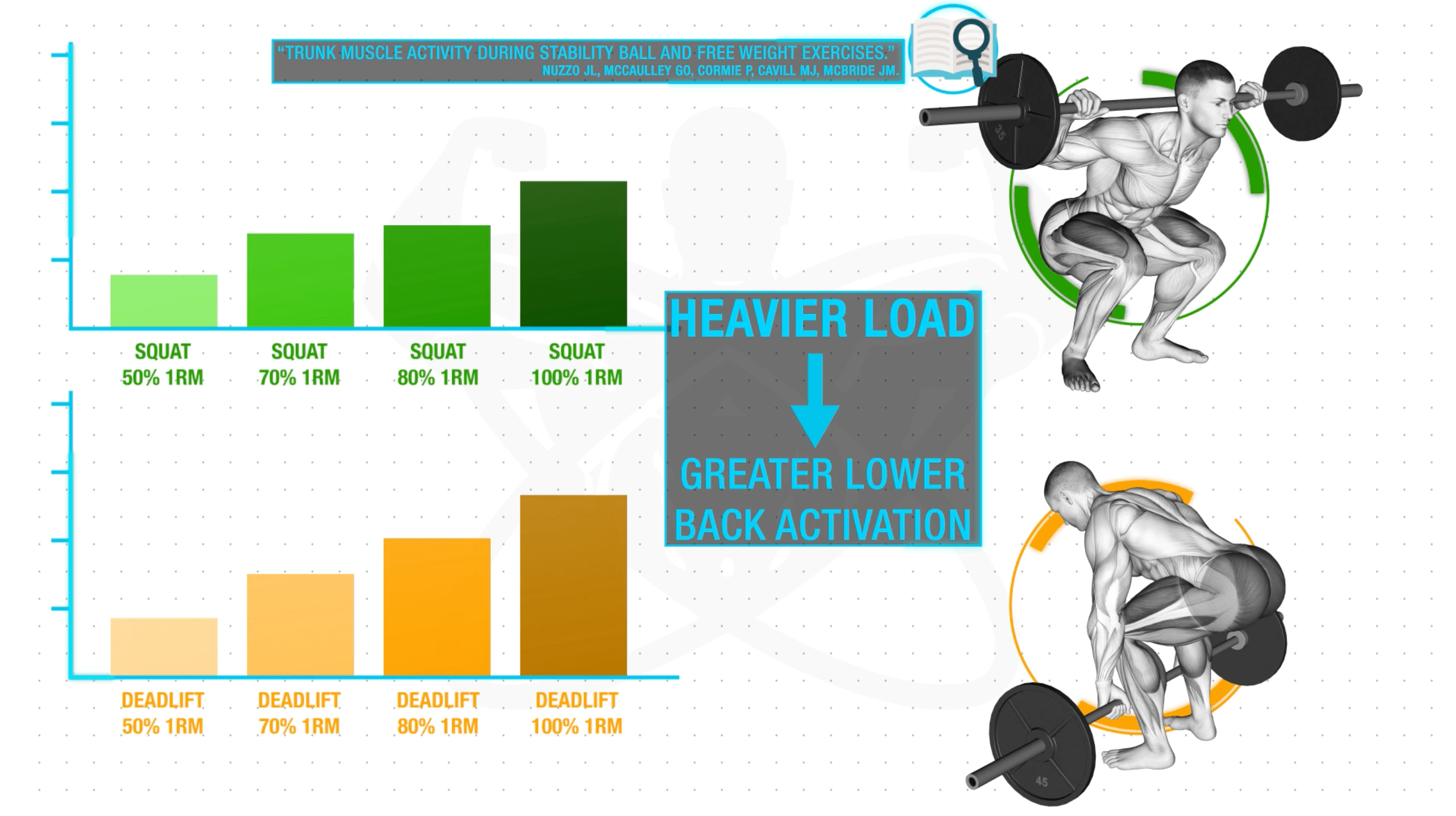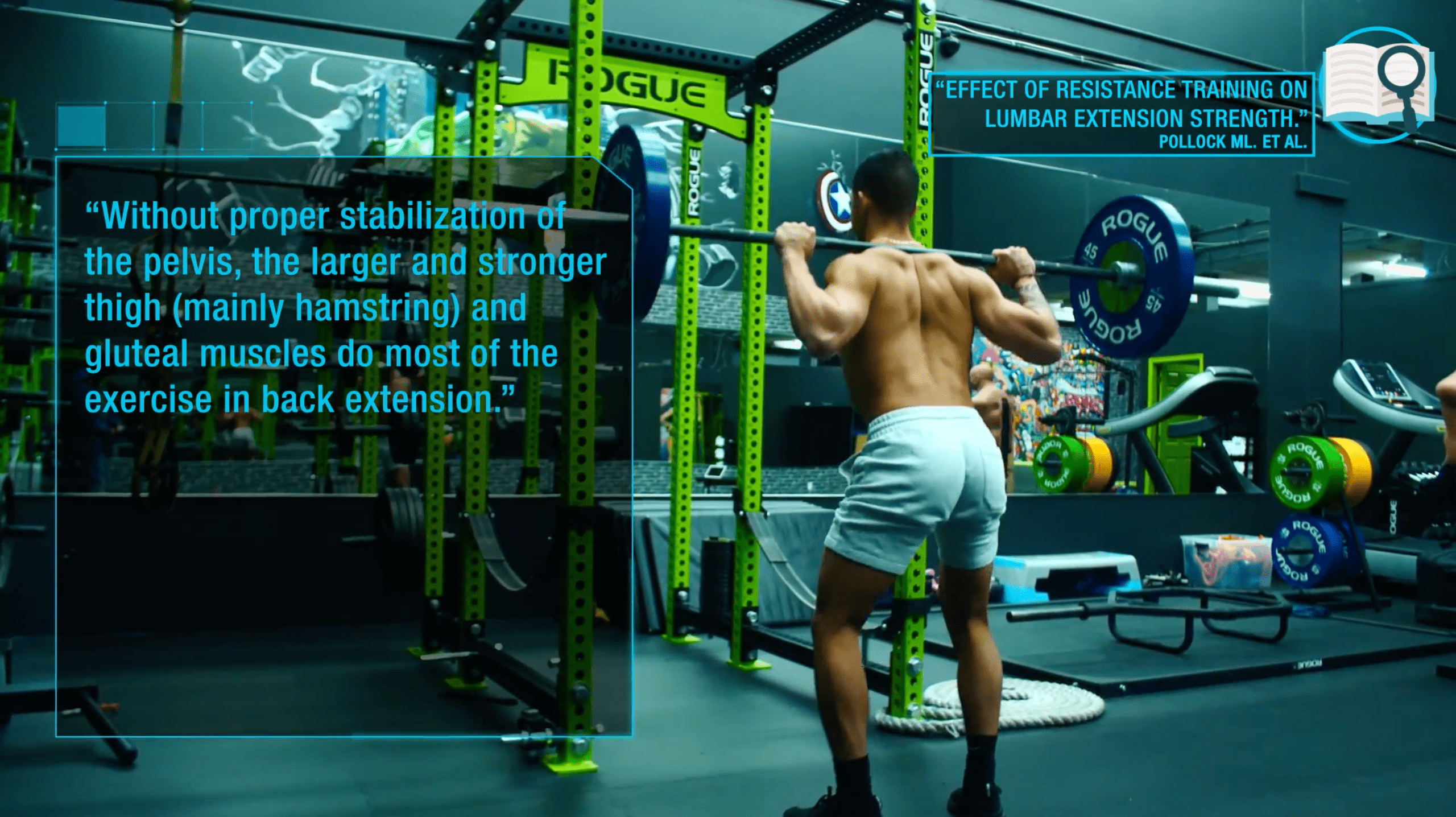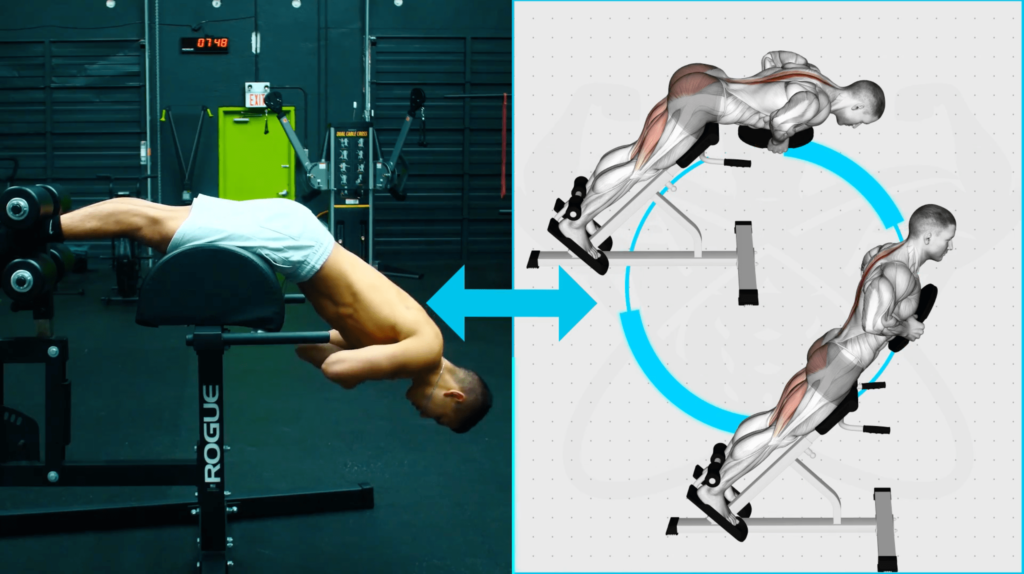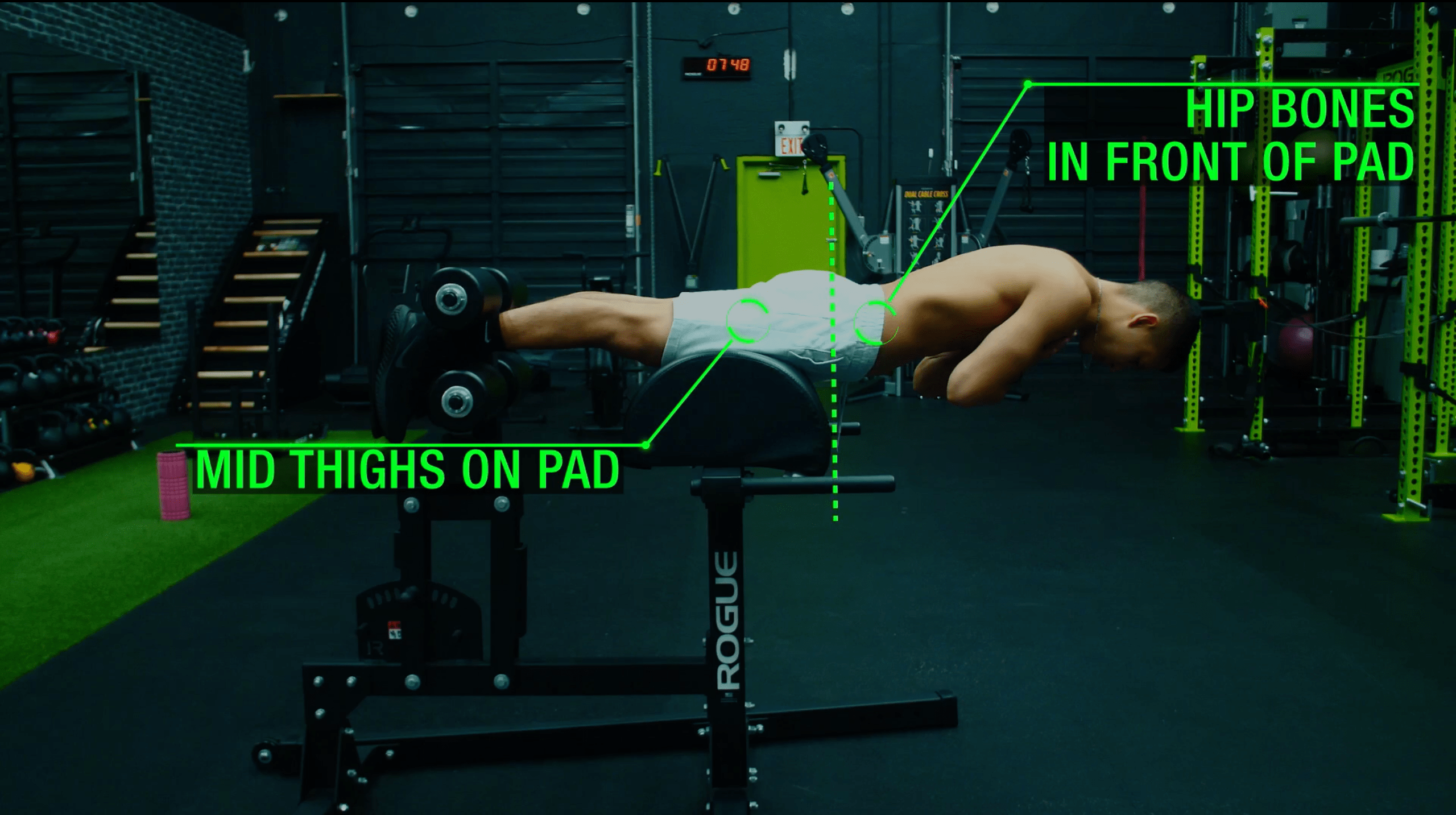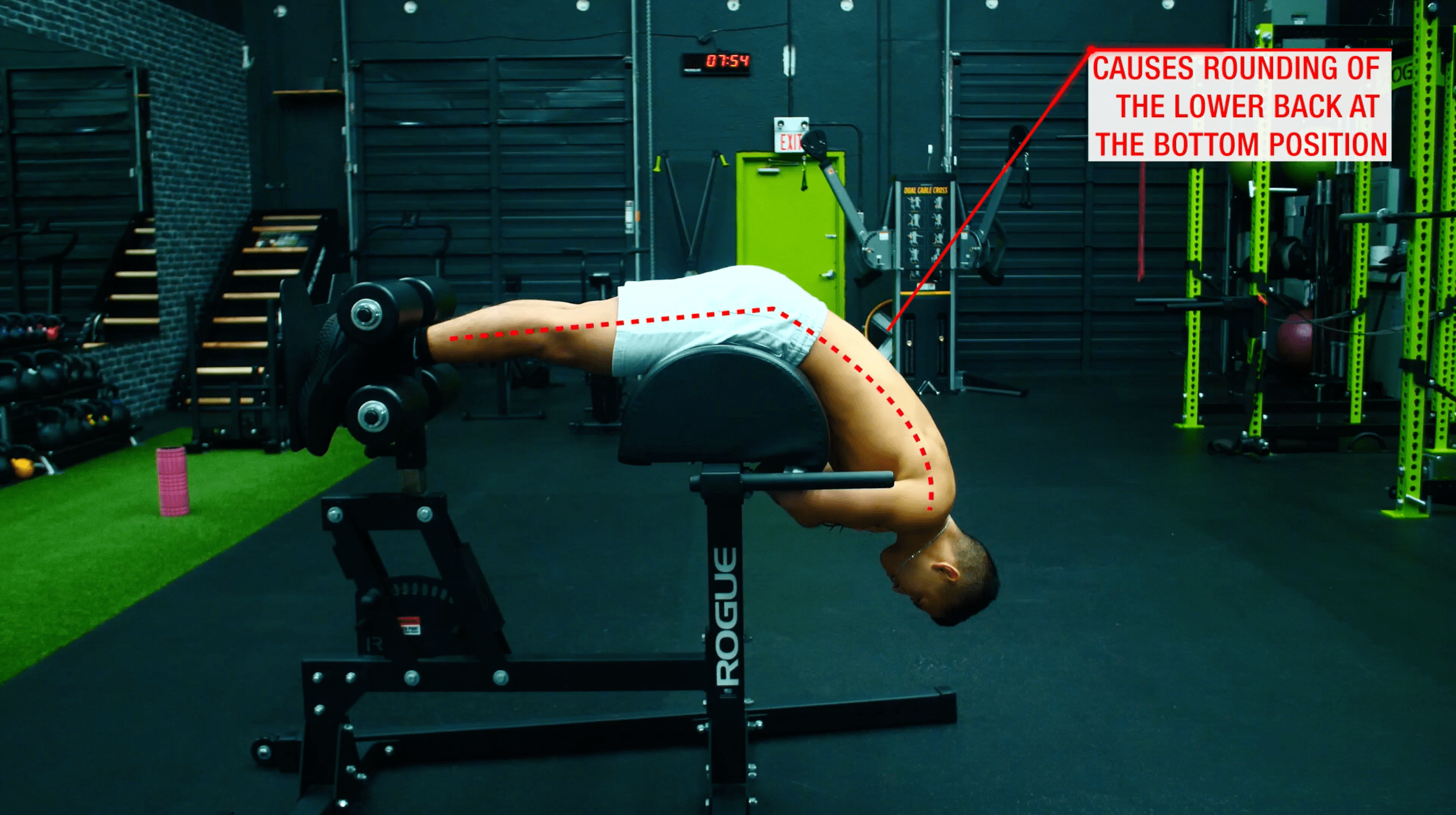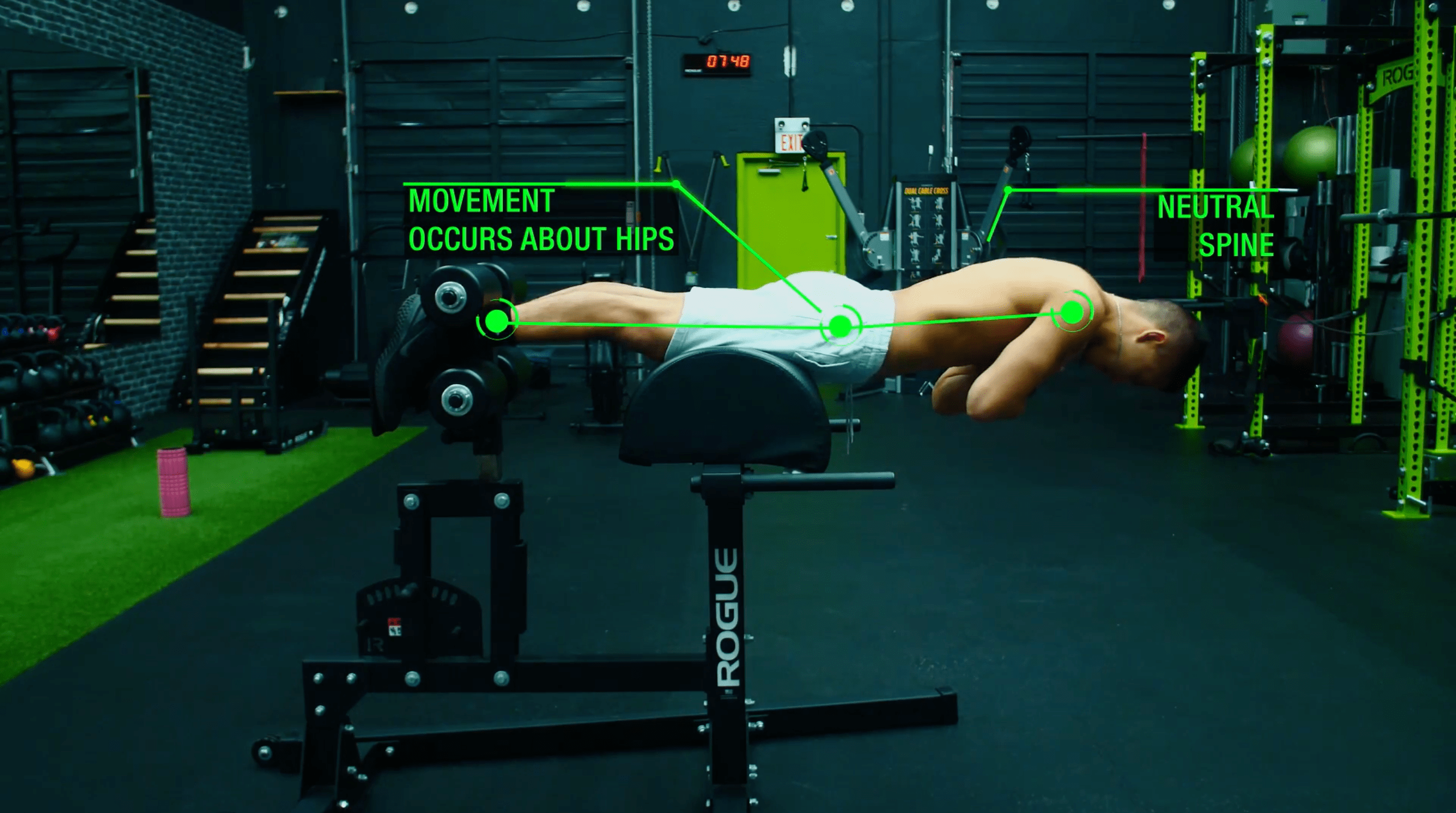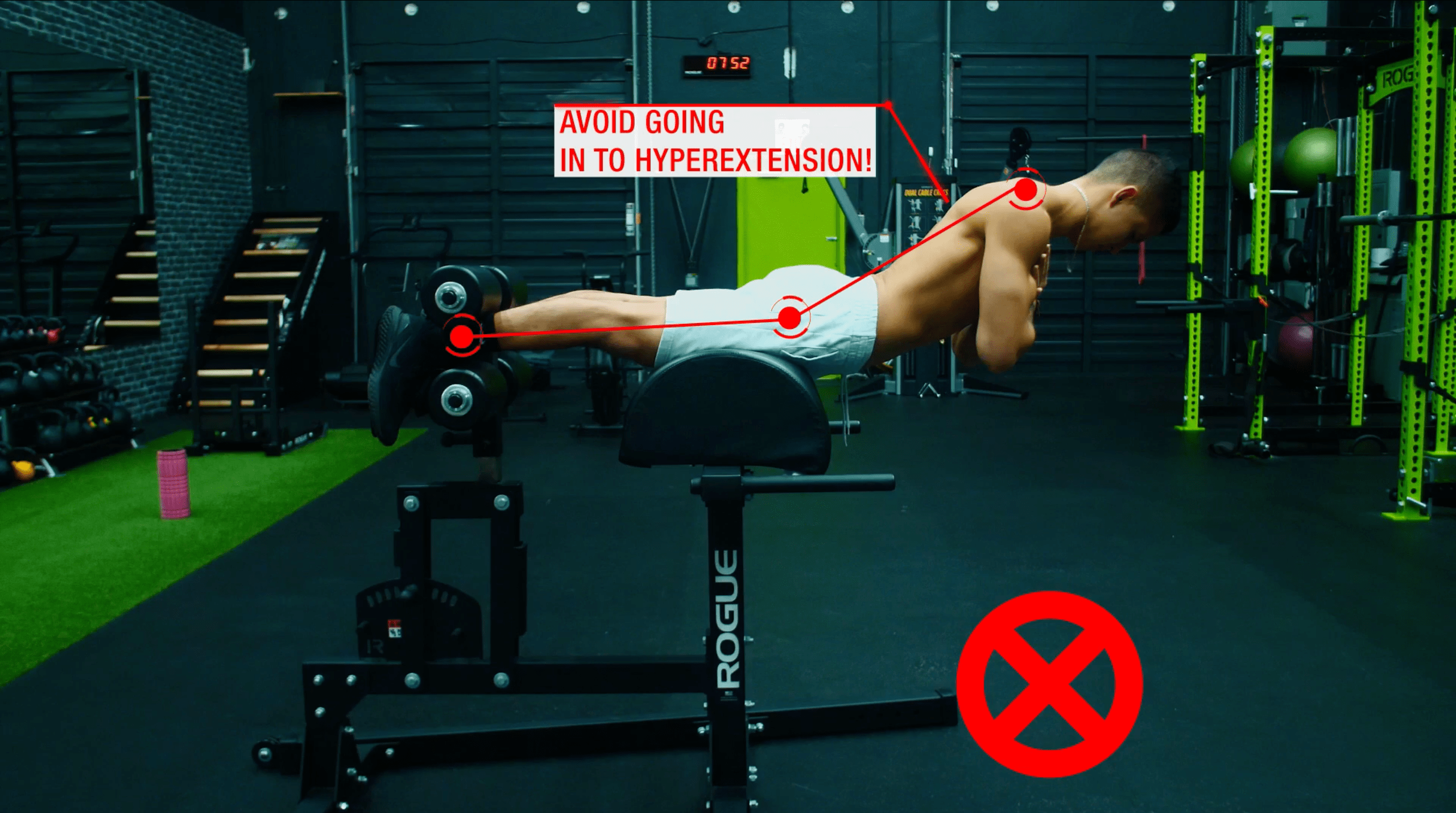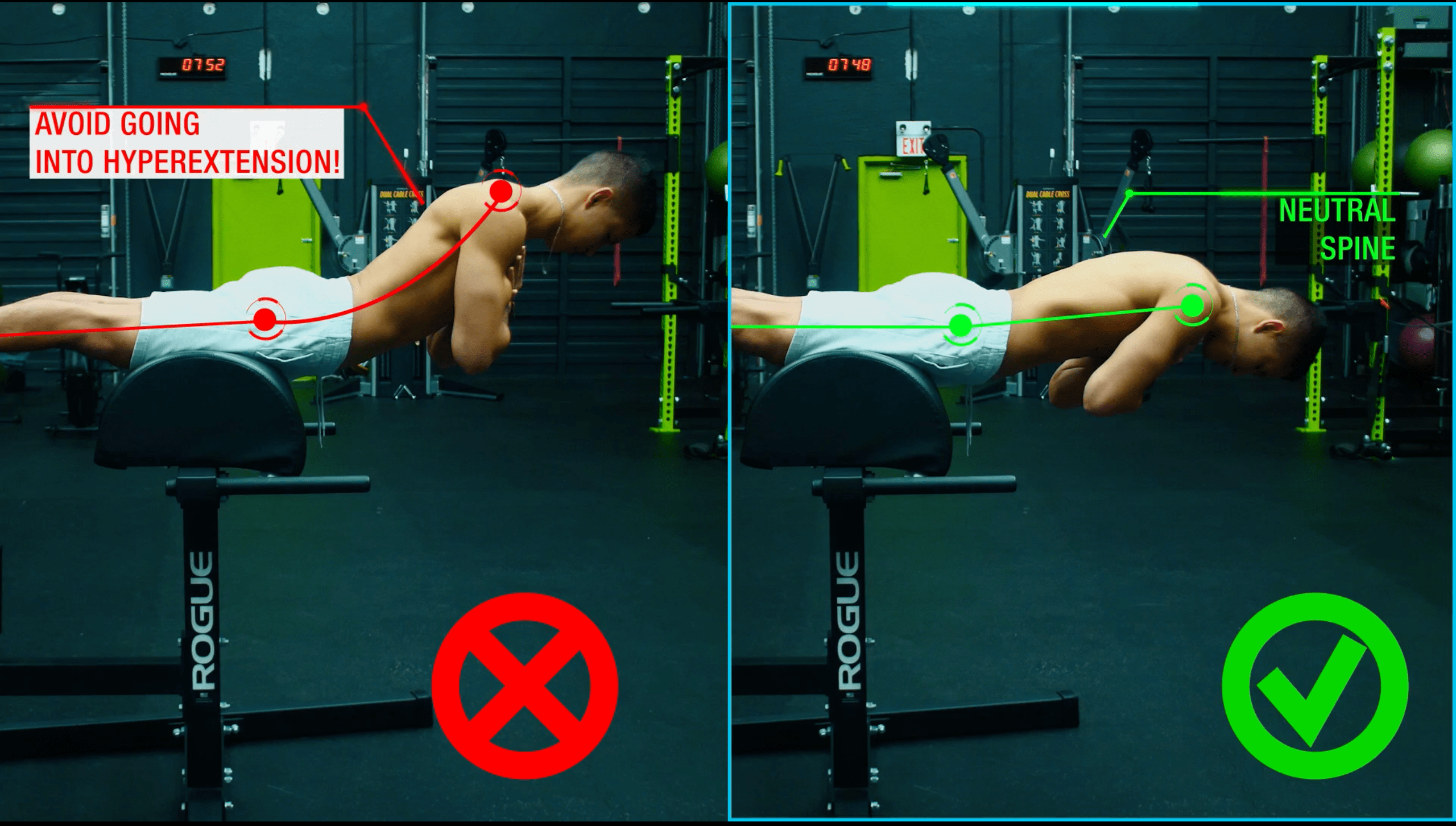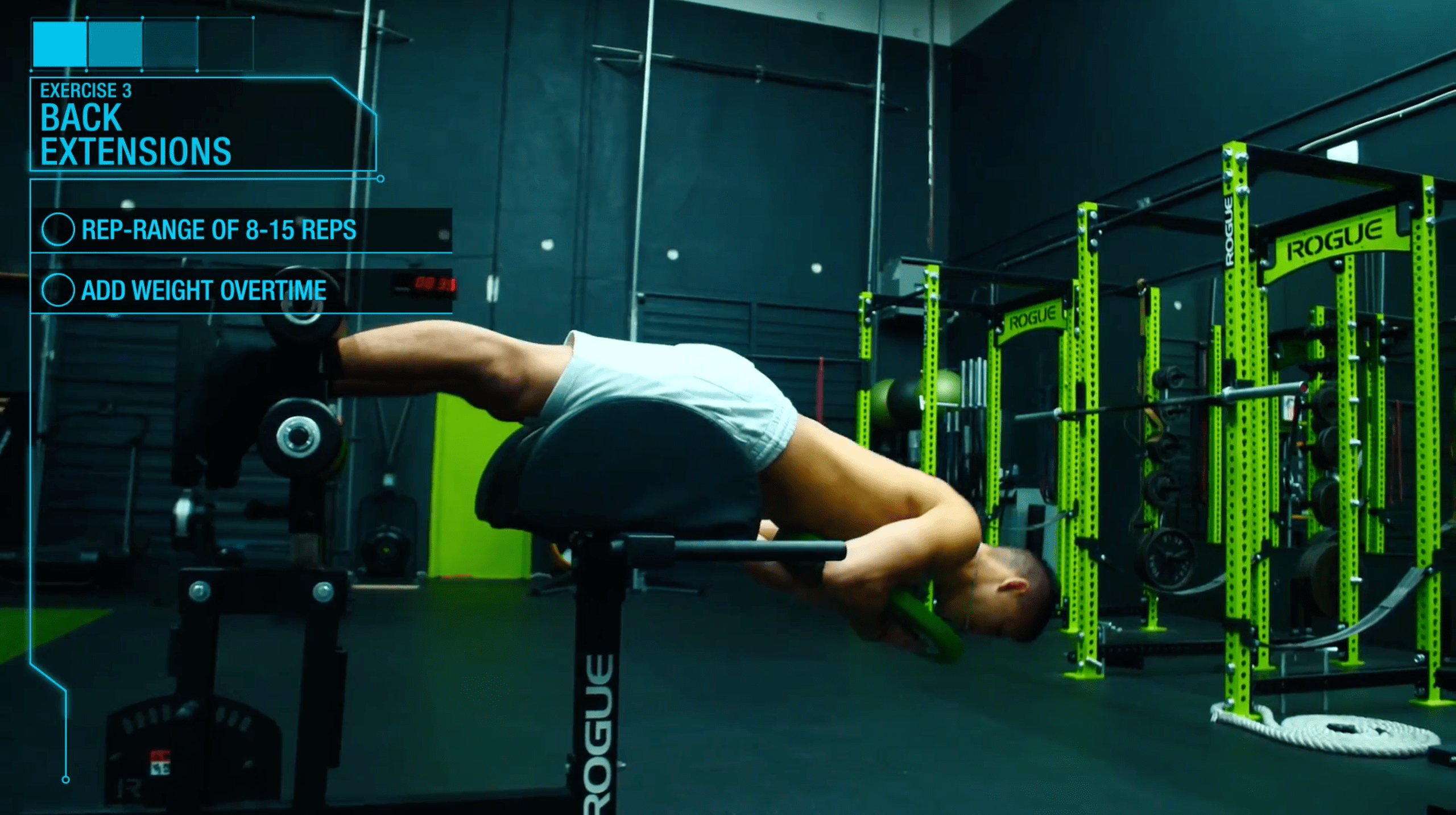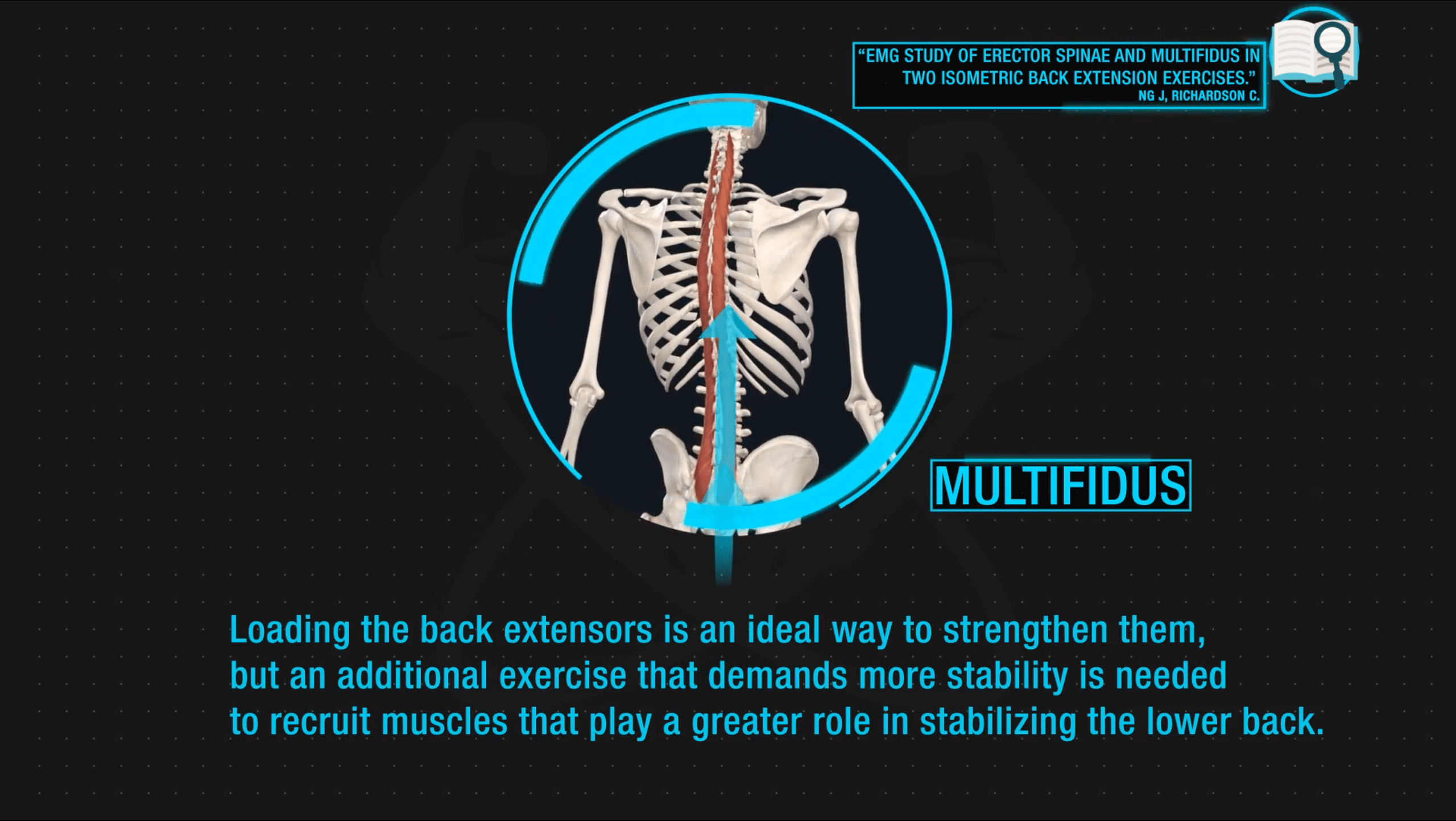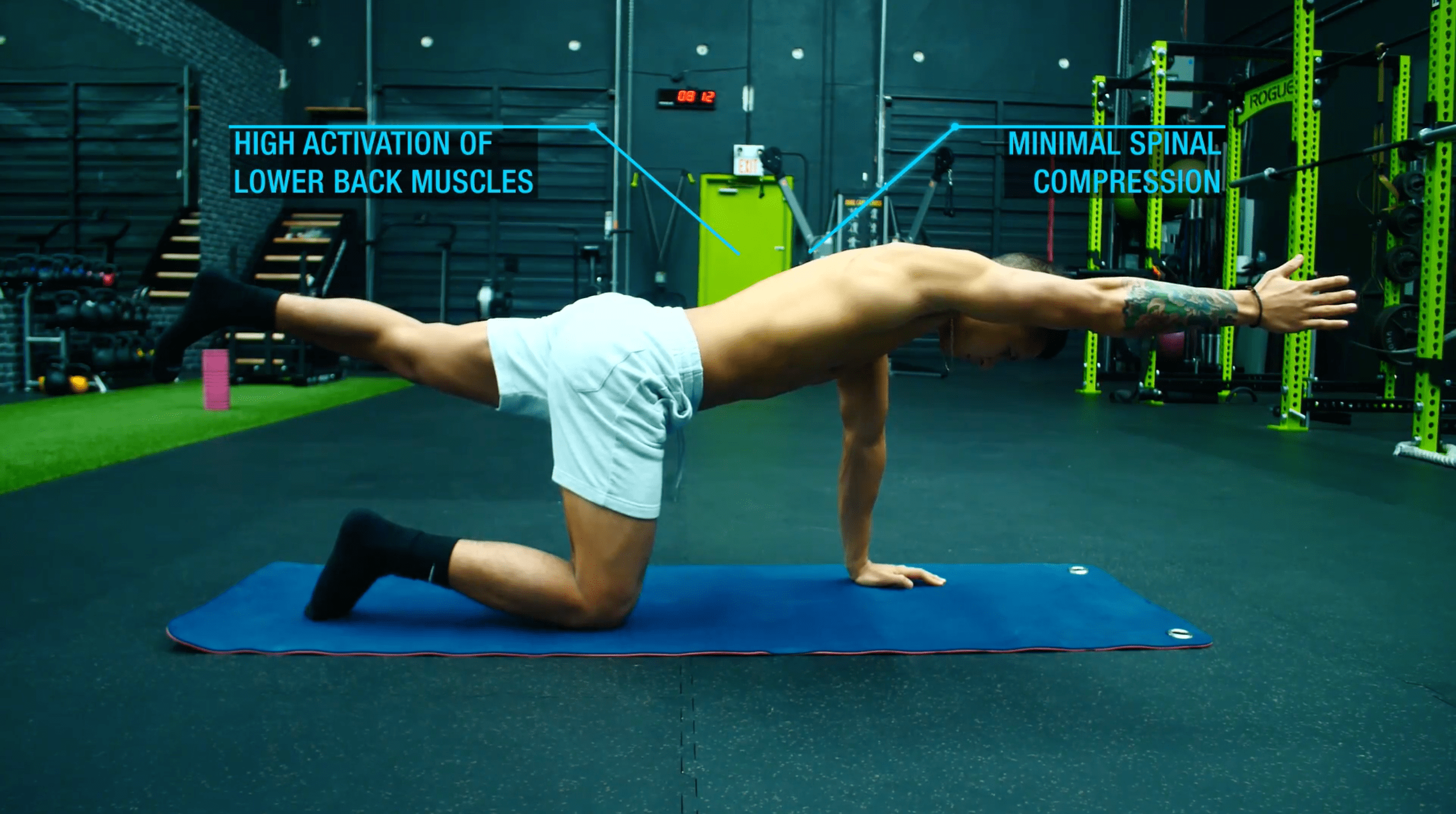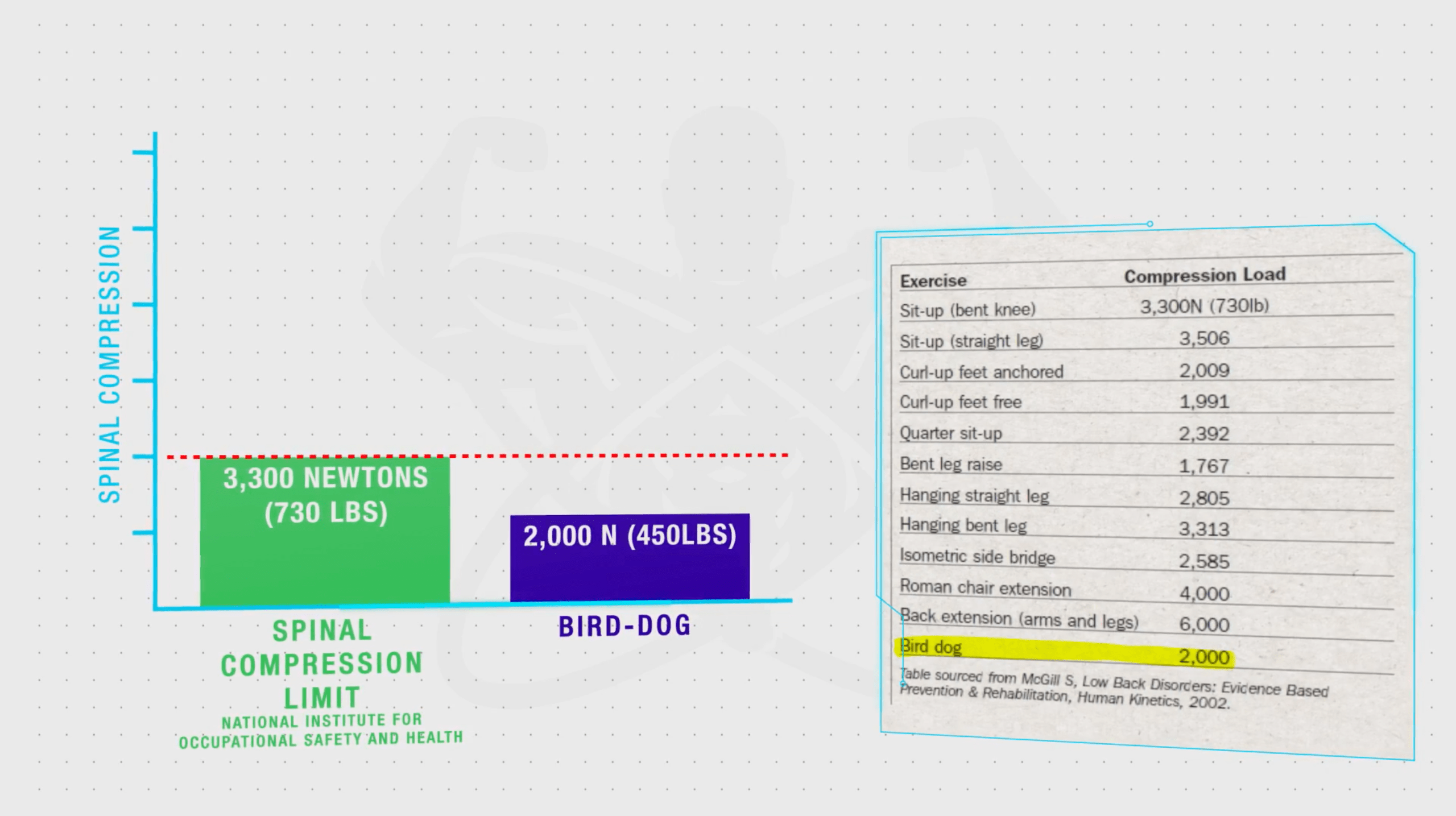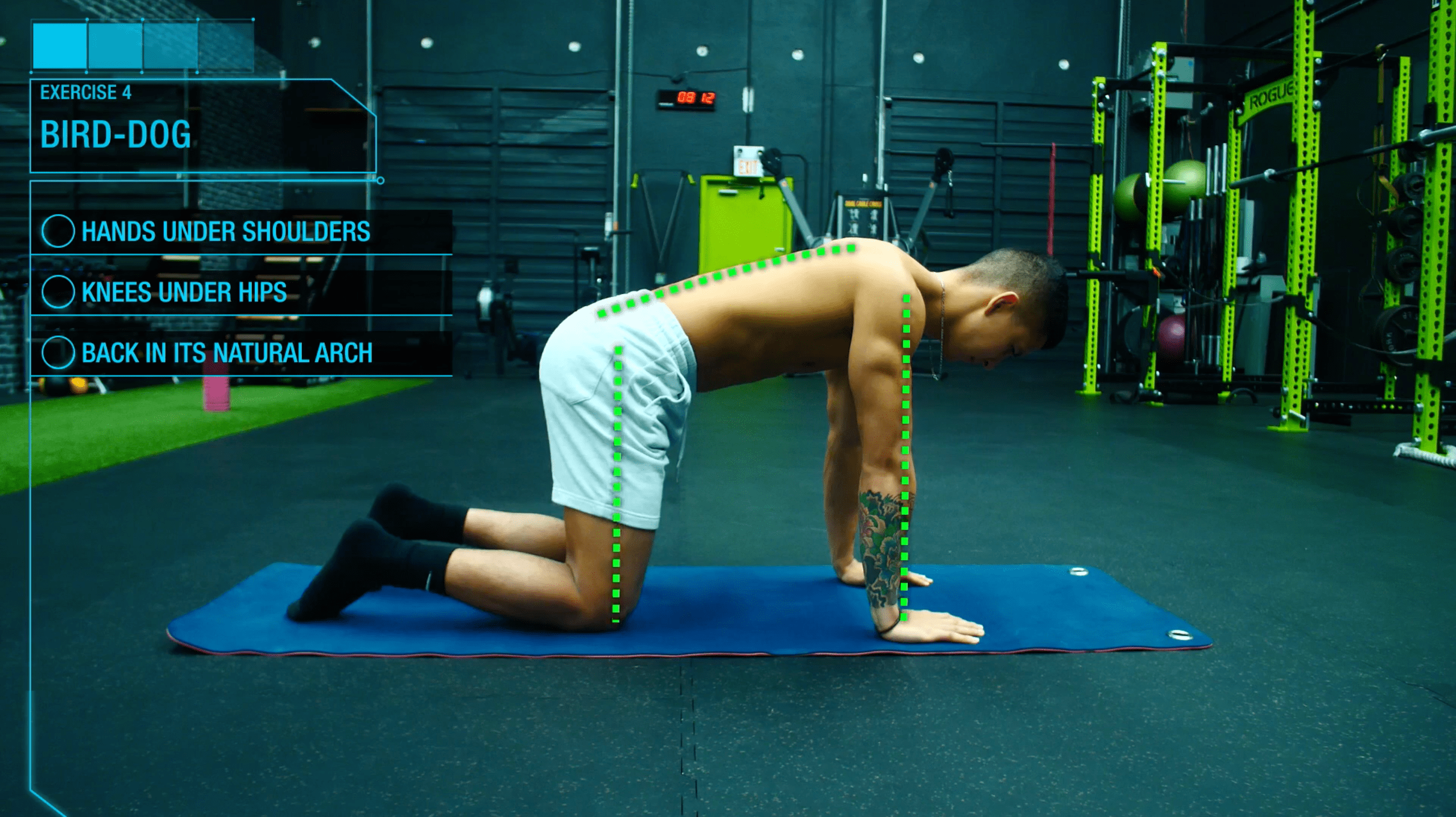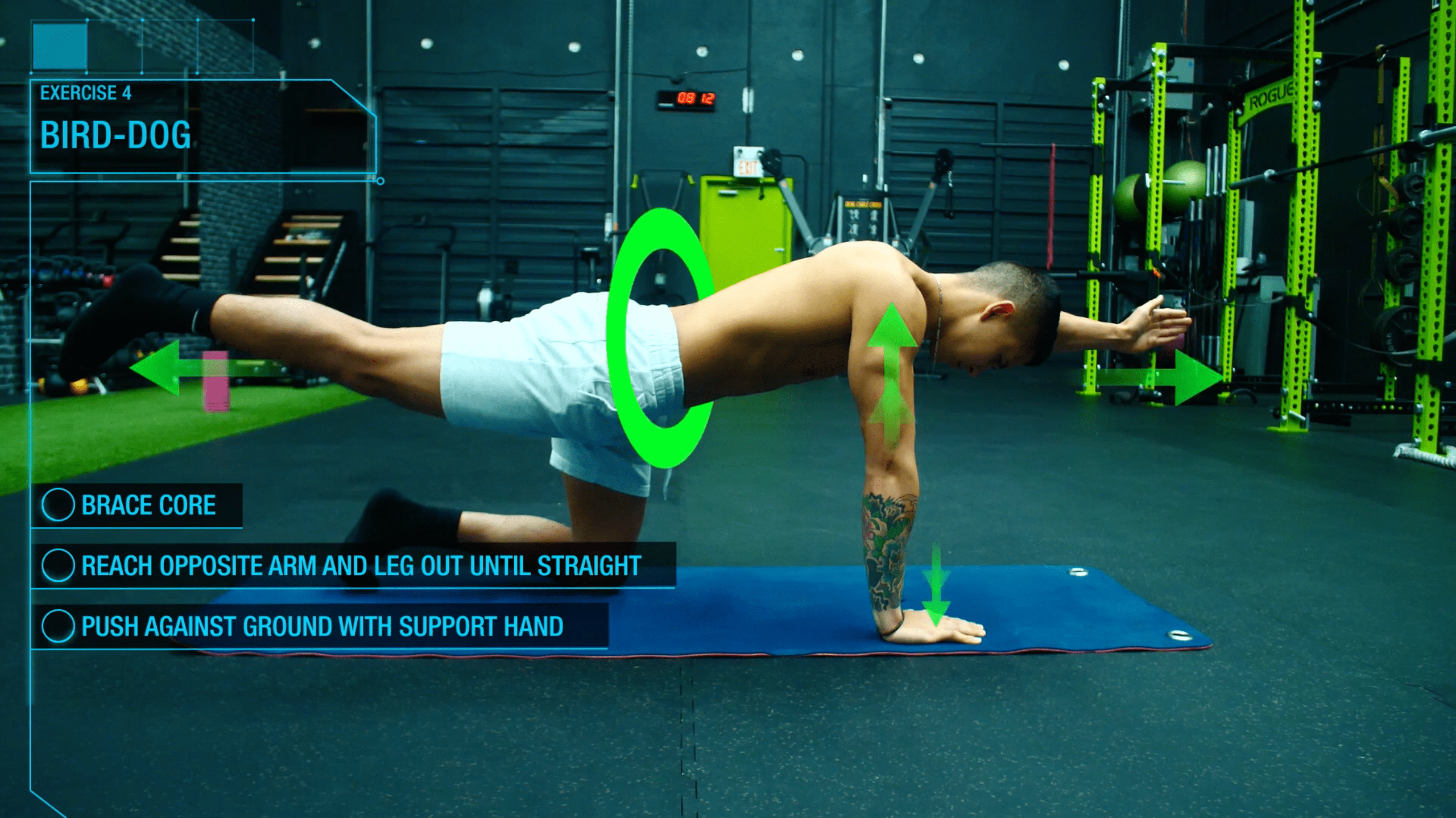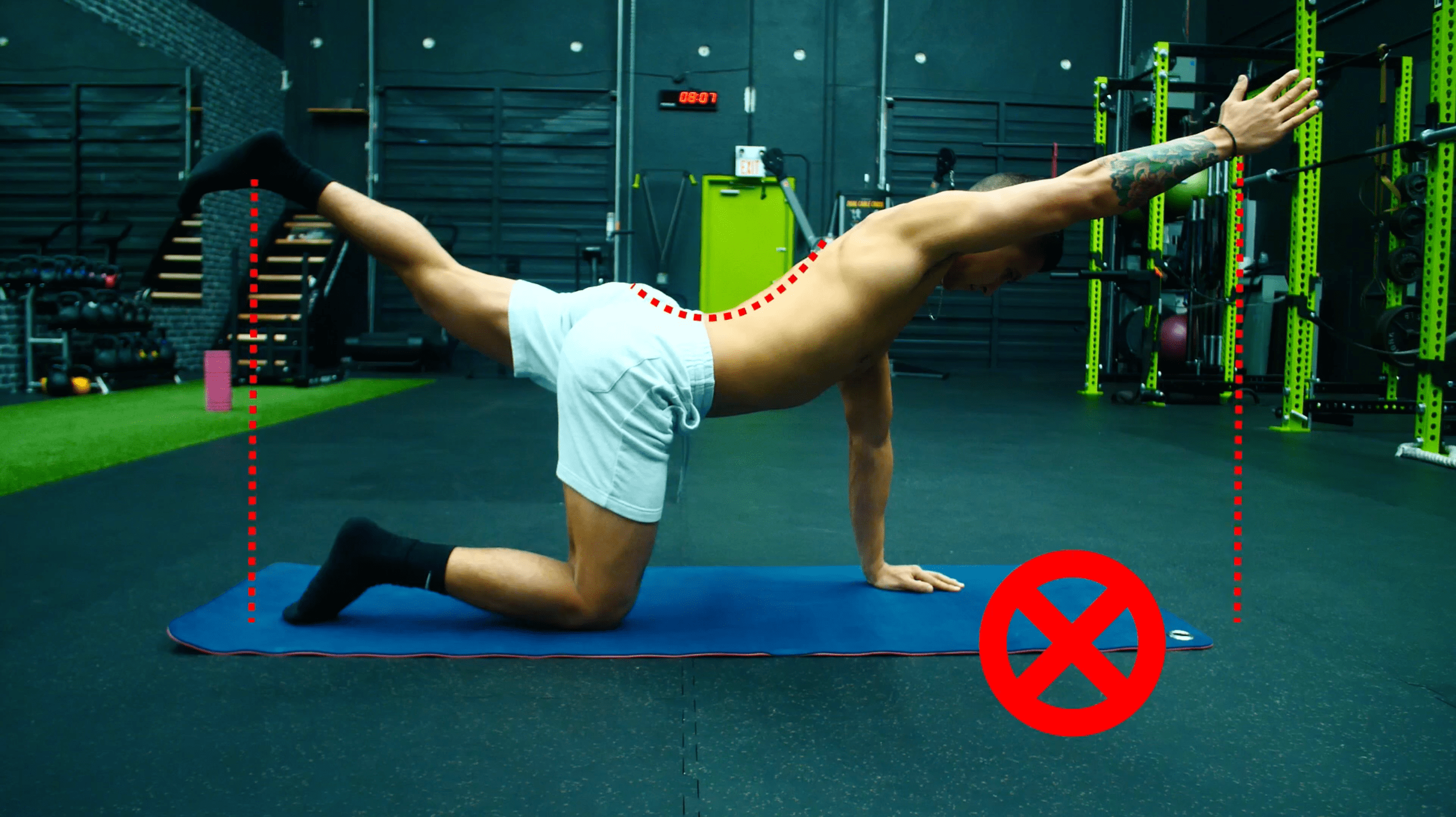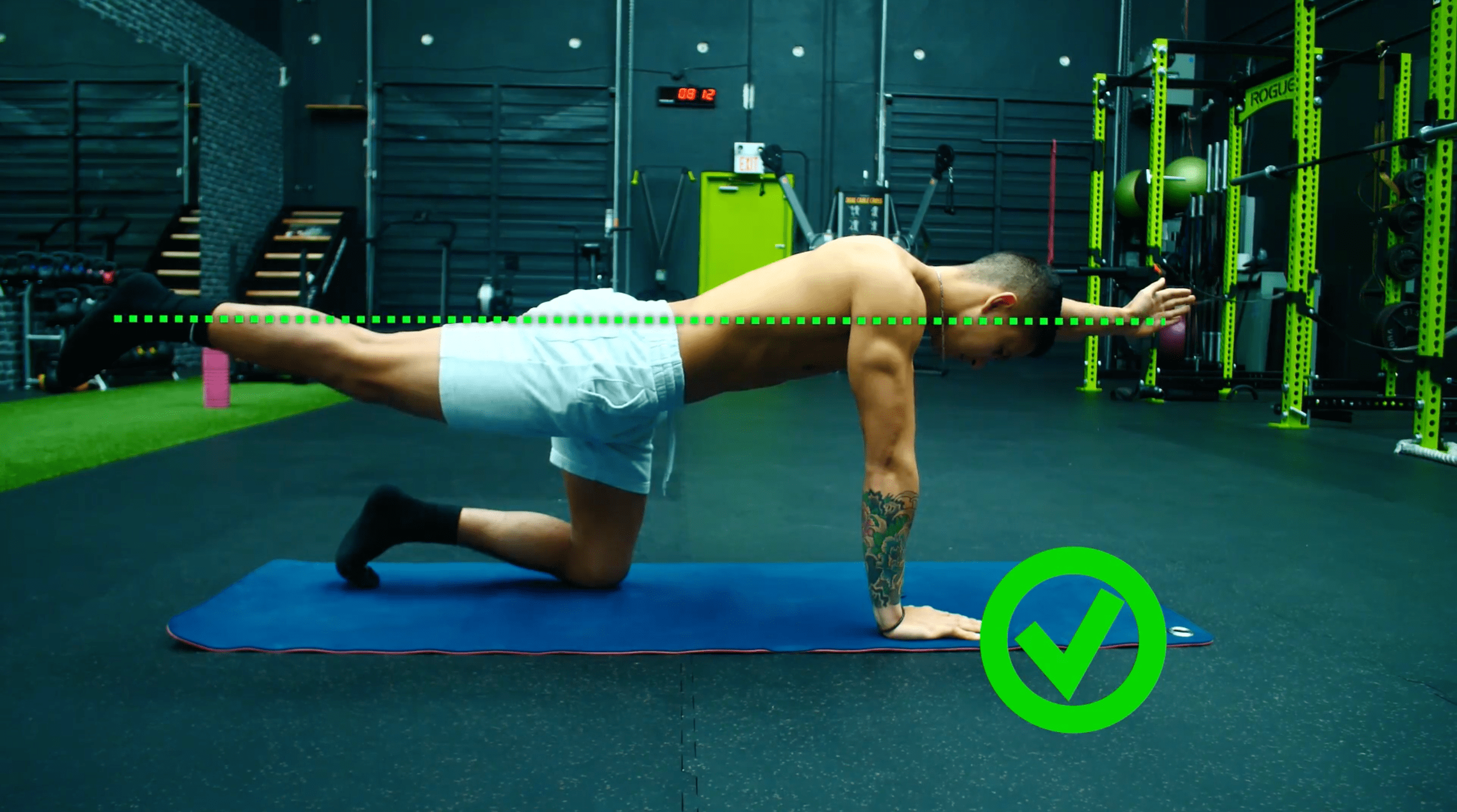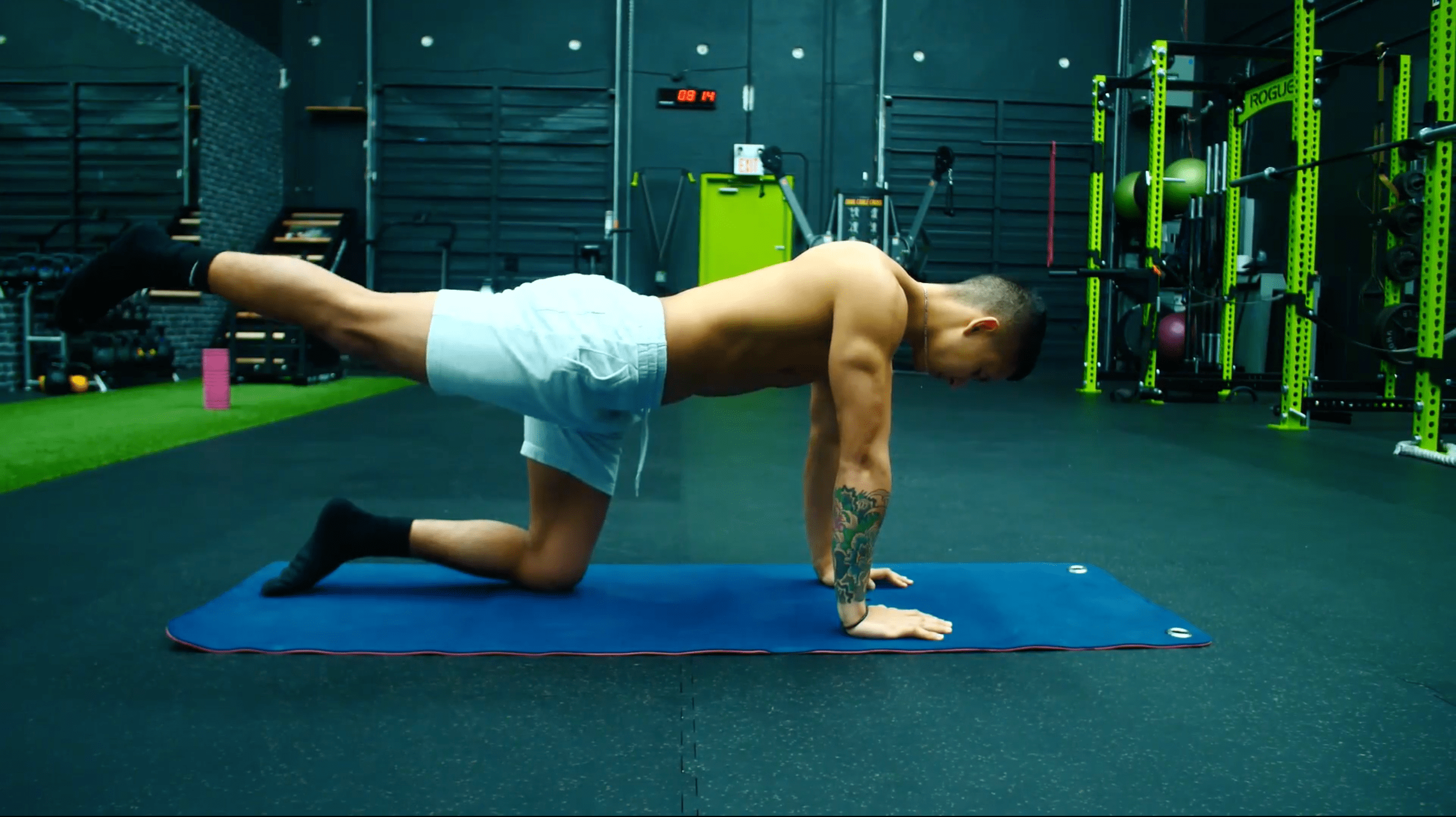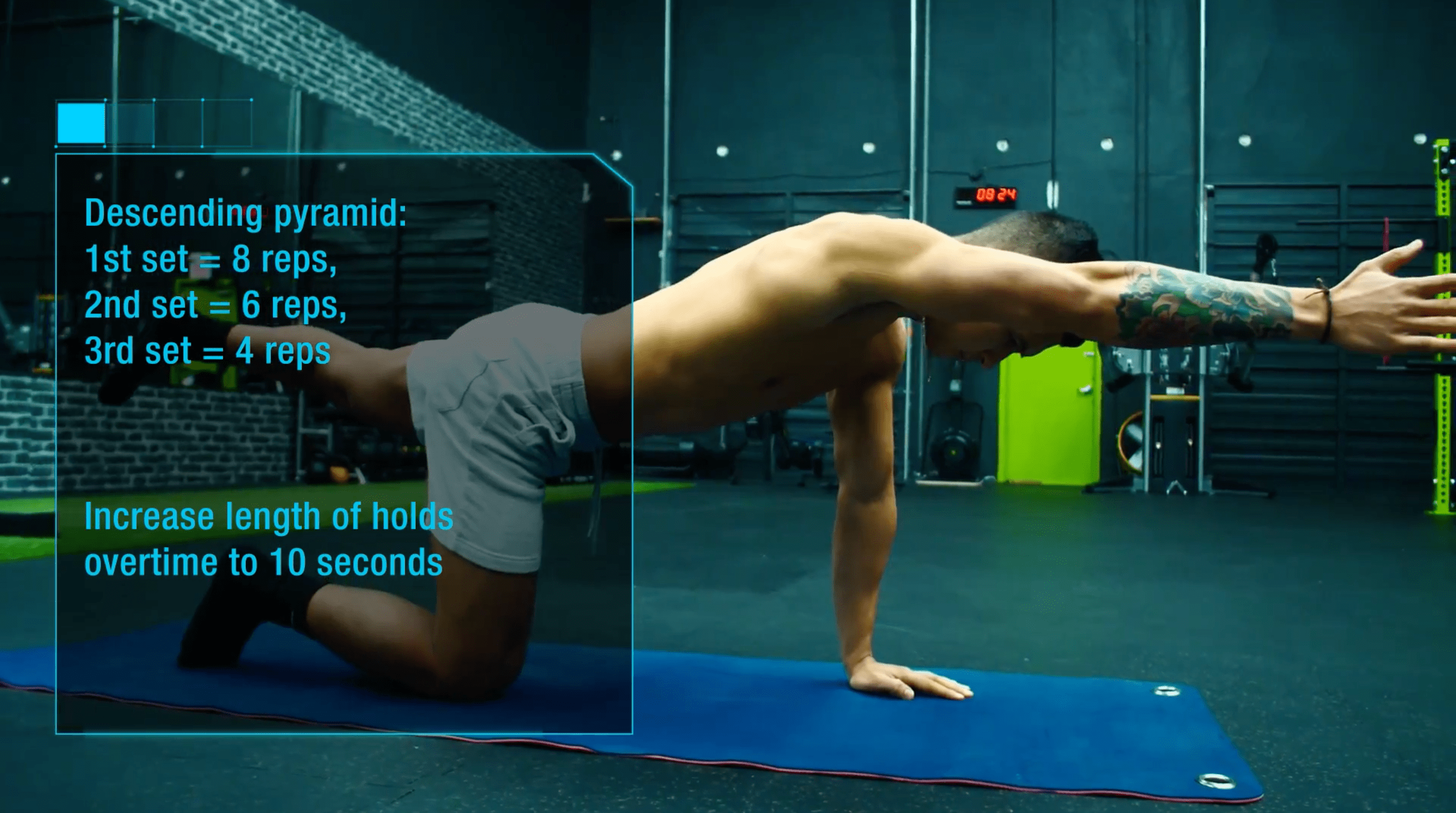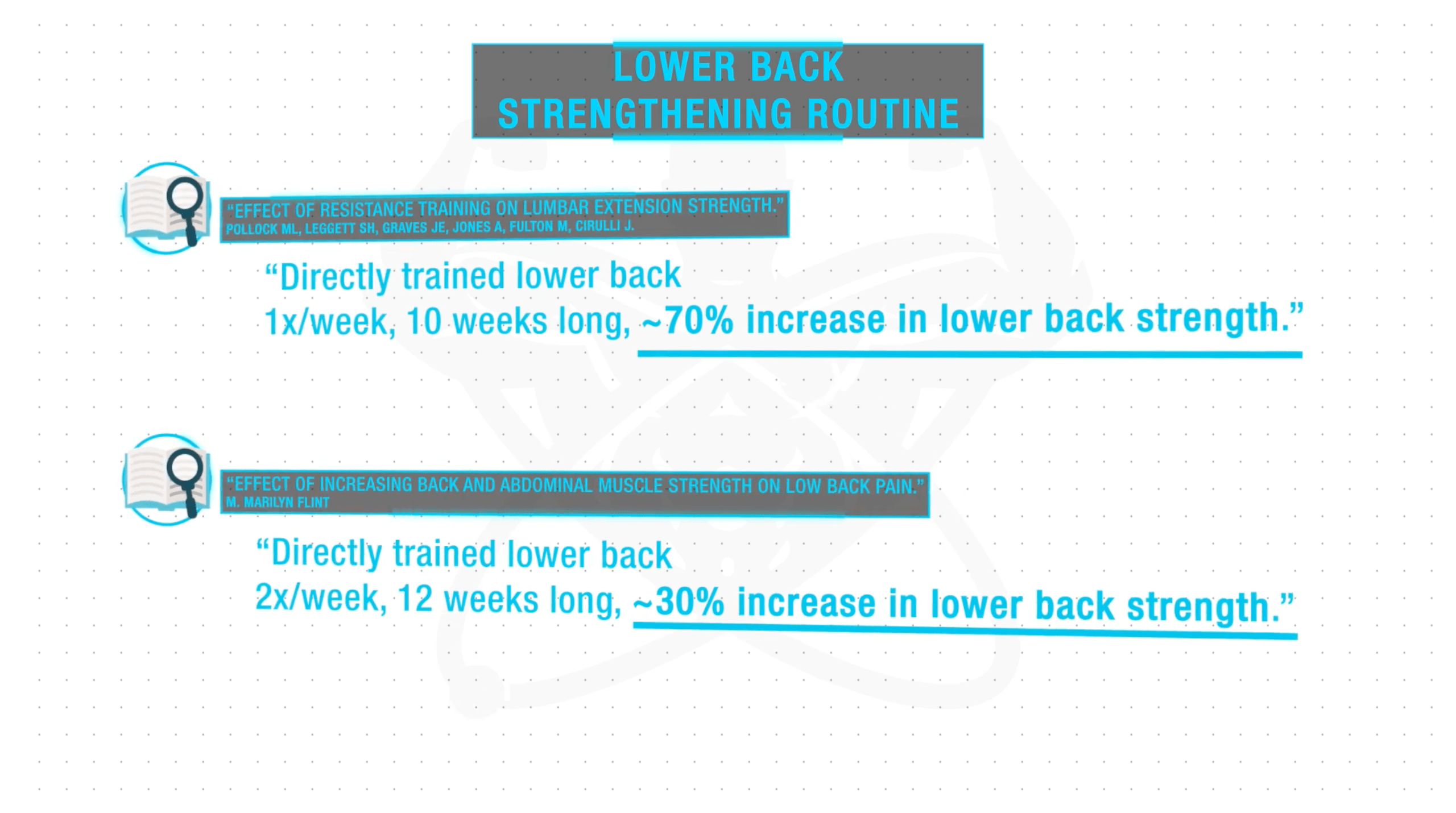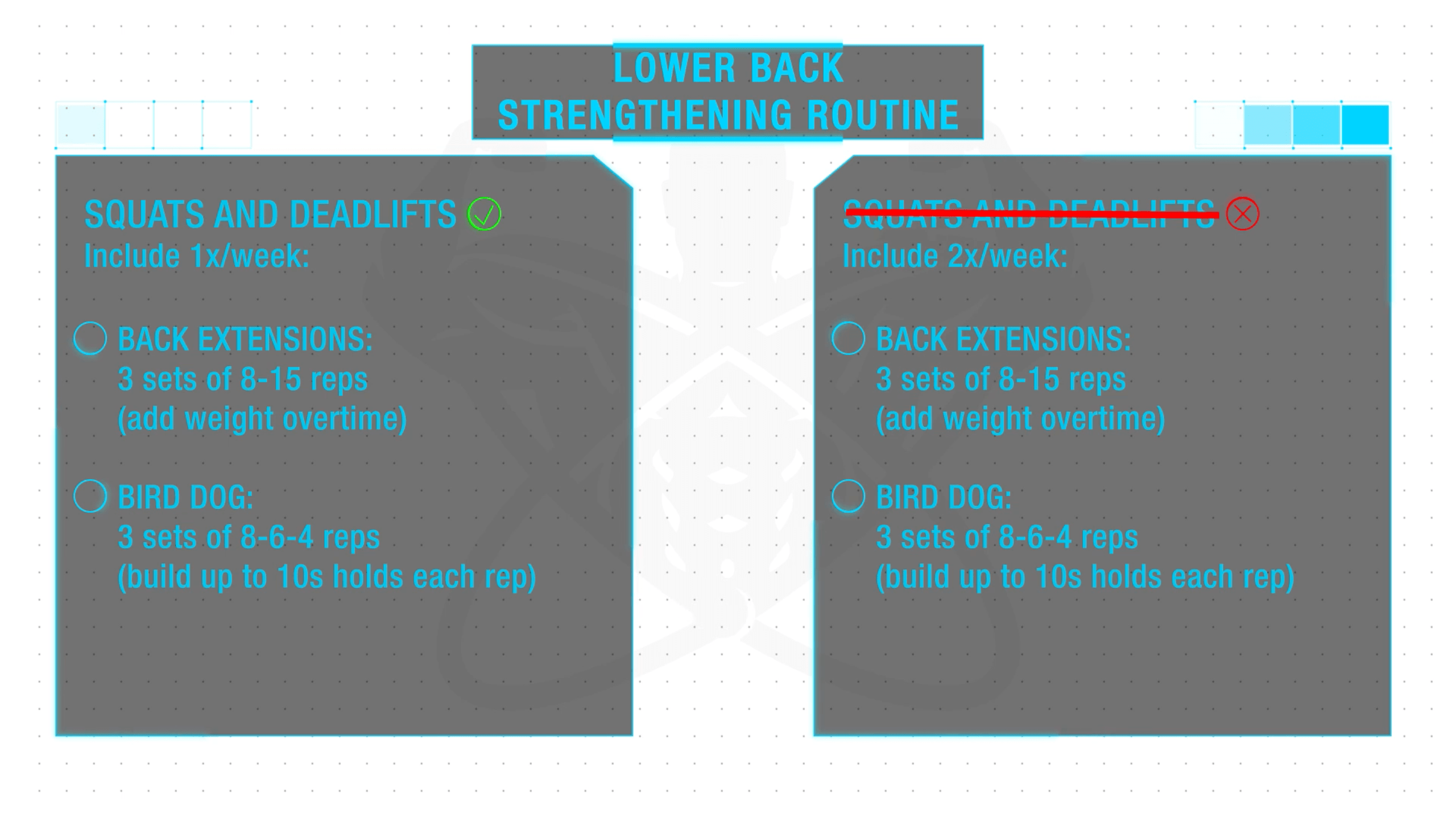The Best Lower Back Exercises To Relieve Lower Back Pain (10 Studies)
Out of every 10 people, it's estimated that roughly 8 of them will experience lower back pain at some point in their lives. If you're dealing with, or have dealt with lower back pain, read this article. Because below, you'll find out how to provide relief by strengthening your lower back with the best lower back exercises.
Lower back pain can stem from numerous factors. But multiple reviews and case studies (here, here, and here) have found that people with lower back pain often tend to have two main issues:
- Lower back strength
- Neuromuscular control.
As such, improving the lower back's strength and coordination seems to be an effective intervention to prevent and reduce the pain they experience. There's something else that's interesting, too. Research indicates that even well-trained individuals who regularly train in the gym seem to have this lower back imbalance as well. And it's thought to be due to a lack of exercises for lower back within their training routines.
Therefore, including lower back exercises that specifically target and strengthen the lower back into your routine would be beneficial for two things. First, to potentially prevent and reduce lower back pain itself. And second, to minimize the risk of you developing lower back weaknesses or imbalances overtime.
A short note before we begin: as the saying goes, prevention is always better than cure. That's why I design every BWS program carefully to ensure that targets all muscle groups evenly (including the lower back!) - so you can transform your physique in the most time-efficient and safe manner. For more information:
Click the button below to take my analysis quiz to discover the best program for you:
↓
Most People Choose The Wrong Lower Back Exercises
Unfortunately, most people who attempt to include lower back workouts go about it the wrong way. They either end up choosing the wrong exercises. Or they’ll implement and perform them in the wrong way. No matter how you see it, both ways worsen the situation.
Take a look at the commonly performed superman exercise, for example.
This exercise is where both the arms and legs move into extension. It's true that this does activate the lower back muscles quite well. But research by Dr. Stuart Mcgill at the University of Waterloo found that it also causes roughly 6,000 Newtons of spinal compression.
Why is that worrying?
Because the National Institute for Occupational Safety and Health actually recommends the lower limit of spinal compression to be just 3,300 Newtons (730lb)! So, we can clearly see how a commonly performed lower back exercise, like the superman, can worsen the issue. Think about it: that's a ton of excessive compression on the spine.
Thankfully, though, I’ll clear everything up for you. Discover how you can incorporate lower back pain exercises into your workout routine. I also provide you with a full routine that you can implement right away.
Lower Back Exercises 1 + 2: Deadlifts And Squats
Before diving into the specific exercises to strengthen the lower back, we need to cover two compound exercises.
These should ideally make up the bulk of your lower back training. And they are the squats and deadlifts. Why? Because these two exercises, especially deadlifts, have been shown to elicit very high activity of the lower back muscles in multiple papers. Better still, they tend to outperform many lower back isolation exercises.
Therefore, free-weight squats and deadlifts should definitely be a staple in your weekly routine as exercises for low back pain because:
- They have been shown to be highly effective for lower back strength and hypertrophy
- They are easy to overload with weight. This allows you to continue adequately challenging the lower back muscles over time.
That said, there are a few problems with squats and deadlifts. These problems may explain why we still see lower back weaknesses and imbalances in individuals that perform them regularly.
Problem 1: Not Everyone Does Them
First off, let’s just face it – not everyone does them. Is this you? If you don't know how to perform them, check out my previous articles on how to squat and how to deadlift to learn.
Problem 2: Not Enough Stimulus
Secondly, we know that the heavier you go with these exercises, the greater the activation of the lower back muscles. But the truth is that a lot of people don’t perform these relatively heavy enough. They, therefore, don't provide enough stimulus to their lower back.
Problem 3: Improper Stabilization Of The Pelvis
And lastly, for those that do perform them and may go heavy enough with them, multiple studies have indicated that without proper stabilization of the pelvis, the much larger and stronger hamstring and glutes often tend to take over. These muscles then do most of the back extension work instead. And this results in less stimulus and strengthening of the lower back muscles.
Therefore, to “fill in this missing gap”, you’ll want to incorporate the next two lower back stretching exercises.
Lower Back Exercise 3: Back Extensions
One of the best exercises for lower back pain is the back extensions. It stabilizes the pelvis such that the lower back can be better activated and strengthened to a much greater degree than other exercises. This attribute of the exercise has been consistently highlighted in the literature.
However, despite the effectiveness and popularity of this exercise, most people don’t perform it in a way that safely works and strengthens the lower back muscles. Instead, their execution just worsens the problem.
How To Properly Execute Back Extensions
To properly execute it, you’ll want to do the following steps. Even though I’ll demonstrate on a glute-ham raise, the exact same tips apply to the Roman chair back extension as well.
First, you need to set up correctly by positioning your pelvis at the top of the pad or just past it. Positioning the pad too far forward, which most people do, is going to cause your back to excessively round as you descend.
Then, simply lower yourself down to the bottom position while keeping a neutral spine. Ascend back up by using your lower back muscles until your torso is in line with your legs.
But avoid going past this point into hyperextension. As this causes more and more spinal compression the back you go.
Instead, keep your spine neutral throughout by stopping before you go into hyperextension:
Recommended Rep Range For Back Extensions
When it comes to how to work out lower back with the back extensions, you’ll want to start out with a rep range of roughly 8-15 reps. Start with your body weight. And then over time as your lower back strengthens and you can perform 15 reps easily, you can continue overloading the movement by holding onto weight or dumbbells.
Lower Back Exercise 4: Bird Dog
In addition to the previous exercise, you’ll also want to include an exercise that challenges your stability to a greater degree. A paper from the Australian Journal of Physiotherapy found that high loading of the back extensors is an ideal way to strengthen them, yes.
But an additional exercise that demands more stability is required to selectively recruit individual muscles that play a greater role in stabilizing the lower back. Such as the multifidus, as shown below:
And this is especially important. Why? Because many people with lower back pain actually have strong and big backs. They only lack proper coordination and stability.
The Bird Dog Exercise Improves Lower Back Stability
An effective way to improve lower back stability and coordination is by using the bird dog exercise. The exercise successfully manages to accomplish two things:
- Elicit greater activation of the various stabilizer muscles in the lower back
- And it’s also been shown to do so with minimal spinal compression. In fact, going back to Dr. Stuart Mcgill’s research, compared to the superman exercise, this exercise brought out a much safer 2,000 N (450lbs) of force on the lower back.
How To Properly Execute Bird Dogs
But again, it’s vital that you perform it correctly.
First, get on all fours with your hands under your shoulders, knees under your hips, and back in a natural slightly arched position.
Next, brace your core and reach with 1 arm all the way in front of you. Simultaneously reach with your opposite leg behind you until they’re both straight. As you do so, push with your support hand down into the floor so that your upper back pushes off the floor slightly. Hold this top position for 5 seconds or so. Then, return to the start position and repeat with the other arm and leg.
You want to avoid raising your arms and legs too high and arching your lower back. Instead, raise until they’re parallel with your body. And focus on keeping your back neutral throughout the movement:
If this is too difficult though, you can easily regress the exercise by reaching out with just an arm reach:
Then progress to a leg reach, and then finally to both the arm and leg:
If you're enjoying this step-by-step guide for proper exercise execution, you're going to love our 3-on-1 coaching program. You are going to have a coach who'll focus solely on your training and making sure you perform every single exercise in your customized workout sessions optimally (and safely!) for muscle growth. Plus, a dietitian and I will also be available to guide you every step of the way. If that sounds good to you, then:
Click the button below to find out more about the 3-on-1 coaching program:
↓
Recommended Rep Range For Bird Dogs
When it comes to how to work out lower back with the bird dogs, I’d use Dr. Stuart Mcgill’s recommendation of using a descending pyramid for the rep ranges:
- Start with 8 reps each side for the first set
- Go down to 6 for the second set
- And then down to 4 for the final set.
And over time, you’ll want to focus on increasing the length of the holds at the top. Do so until you’re able to hold for roughly 10 seconds or so each rep.
The Best Lower Back Strengthening Routine
To sum this all up into a weekly routine for you, here’s what I’d recommend when it comes to how to work out the lower back. Based on research on the training frequency and volume of the lower back, you actually don’t need much at all to see significant improvements in strength. And you definitely don’t want to overdo it. Good lower back workouts don't mean excessive volume.
You Don't Need Much To See Improvements In Lower Back Strength
In fact, multiple papers have shown that even for well-trained individuals, adding in just one lower back exercise 1-2 times per week was able to quickly and significantly increase lower back strength:
- Study 1 = 1x/week, 10 weeks long, ~70% strength increase
- Study 2 = 2x/week, 12 weeks long, ~30% increase
Scenario 1:
Therefore, what I’d suggest is that if you’re currently able to squat and deadlift weekly with free weights, then you’d likely just need to throw in the following 2 lower back exercises once per week for a few sets each and overload them as you get stronger.
- Back Extensions: 3 sets of 8-15 reps (add weight overtime)
- Bird Dog: 3 sets of 8-6-4 reps (build up to 10s holds each rep)
Scenario 2:
Whereas if you’re unable to do squats and deadlifts or don’t go very heavy with them, you can opt to do these more often (e.g. 2x/week):
- Back Extensions: 3 sets of 8-15 reps (add weight overtime)
- Bird Dog: 3 sets of 8-6-4 reps (build up to 10s holds each rep)
The Best Lower Back Strengthening Exercises (Takeaway)
By now you should have a clear idea on how to fix your lower back pain, by incorporating some of the exercises for lower back pain relief as mentioned in this article. Regardless of how you set it up though guys, by including these exercises in some fashion within your current regimen, you’ll be able to:
- Significantly boost your lower back strength
- Potentially reduce your lower back pain
- And minimize the risk of you developing lower back weaknesses or imbalances overtime.
But at the same time, you need to be sure that you’re not unknowingly overlooking other areas of your body as well.
And that’s exactly why within my Built With Science programs, I’ve taken the time to carefully select each and every exercise included in your weekly training routines...
...such that you can build muscle and lean down while actually improving your posture and correcting your muscle imbalances in the process just like countless other members have successfully done with their Built With Science programs.
And to find out which science-based program is best for you and your specific situation, simply take the analysis quiz below:
Click the button below to take my analysis quiz to discover the best program for you:
↓
I hope you enjoyed this article and have gotten a clear answer to how to work out the lower back to strengthen it. Don’t forget to give me a follow and connect with me on Instagram, Facebook, and Youtube as well, in order to stay up to date with my content.







